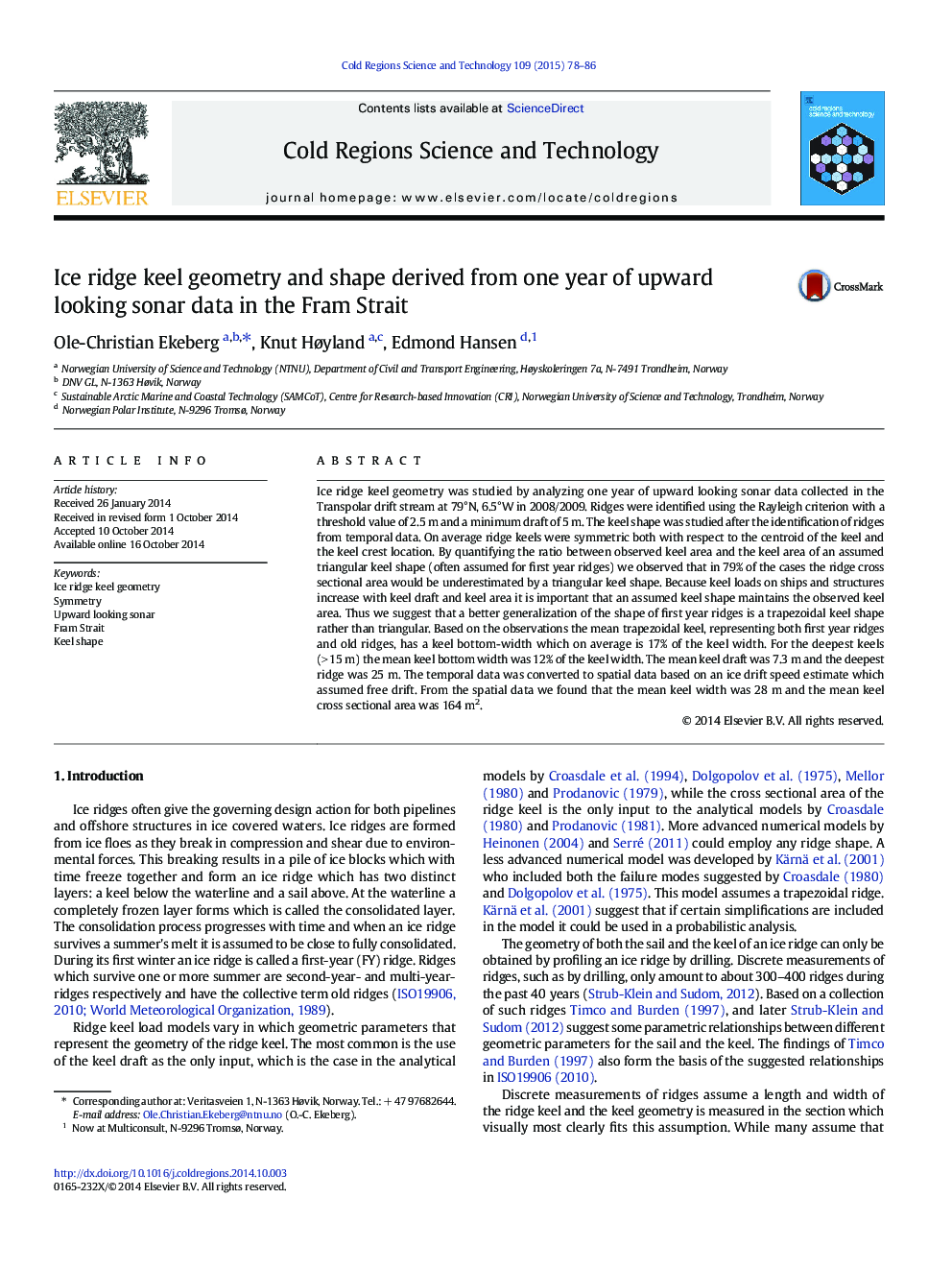| Article ID | Journal | Published Year | Pages | File Type |
|---|---|---|---|---|
| 6426916 | Cold Regions Science and Technology | 2015 | 9 Pages |
â¢Keels are on average symmetric.â¢ULS data show that the keel area is underestimated by a triangular cross section.â¢A trapezoidal keel shape could preserve the observed keel area.â¢On average the keel bottom width would be 17% of the keel width.â¢Mean keel draft was 7.3 m, mean keel width was 28 m while mean keel area was 164 m2.
Ice ridge keel geometry was studied by analyzing one year of upward looking sonar data collected in the Transpolar drift stream at 79°N, 6.5°W in 2008/2009. Ridges were identified using the Rayleigh criterion with a threshold value of 2.5 m and a minimum draft of 5 m. The keel shape was studied after the identification of ridges from temporal data. On average ridge keels were symmetric both with respect to the centroid of the keel and the keel crest location. By quantifying the ratio between observed keel area and the keel area of an assumed triangular keel shape (often assumed for first year ridges) we observed that in 79% of the cases the ridge cross sectional area would be underestimated by a triangular keel shape. Because keel loads on ships and structures increase with keel draft and keel area it is important that an assumed keel shape maintains the observed keel area. Thus we suggest that a better generalization of the shape of first year ridges is a trapezoidal keel shape rather than triangular. Based on the observations the mean trapezoidal keel, representing both first year ridges and old ridges, has a keel bottom-width which on average is 17% of the keel width. For the deepest keels (> 15 m) the mean keel bottom width was 12% of the keel width. The mean keel draft was 7.3 m and the deepest ridge was 25 m. The temporal data was converted to spatial data based on an ice drift speed estimate which assumed free drift. From the spatial data we found that the mean keel width was 28 m and the mean keel cross sectional area was 164 m2.
